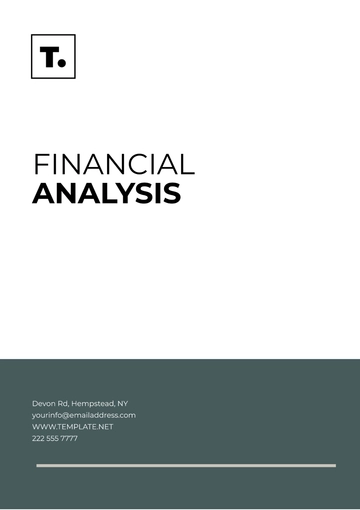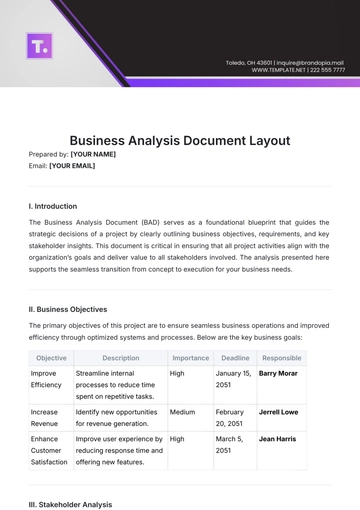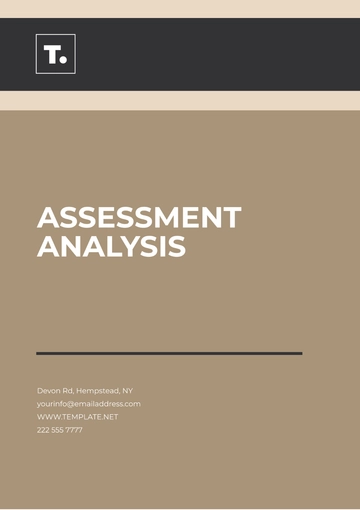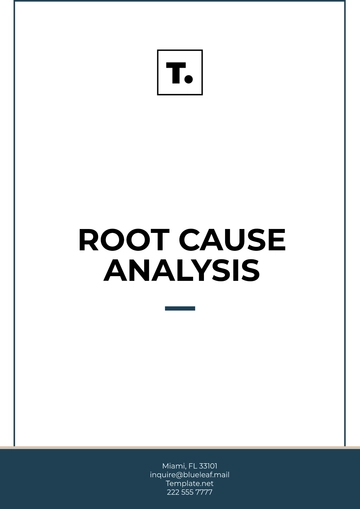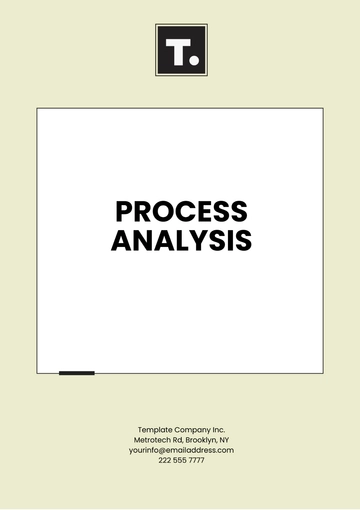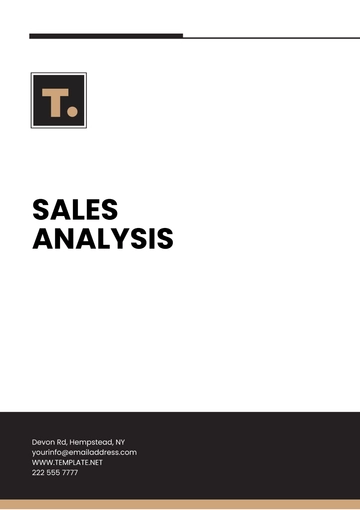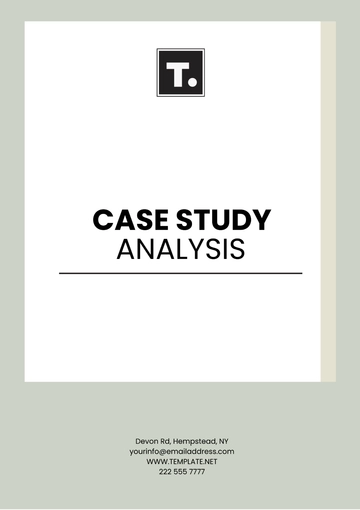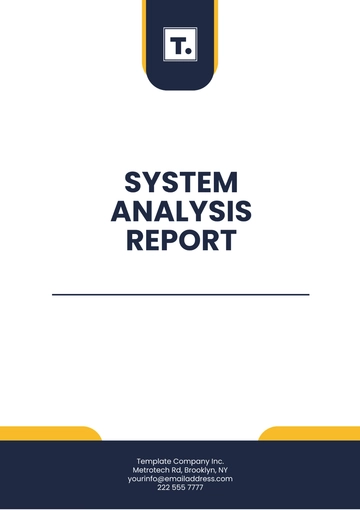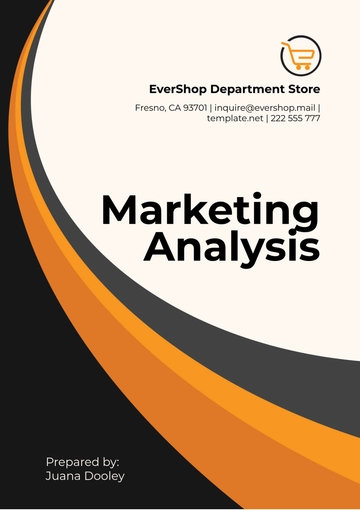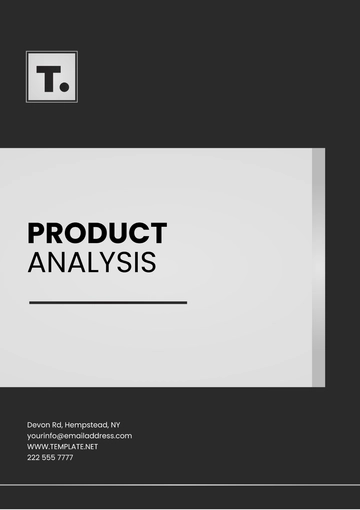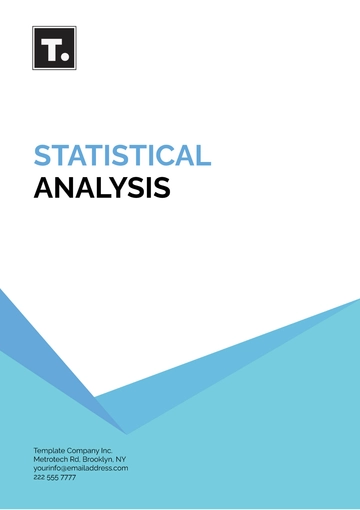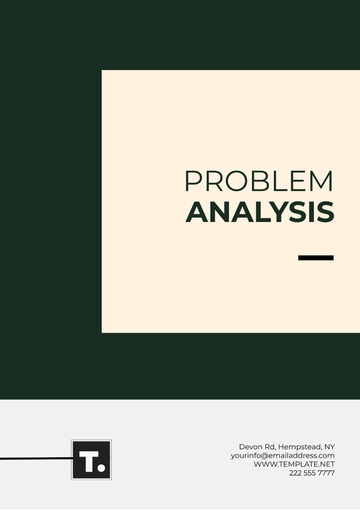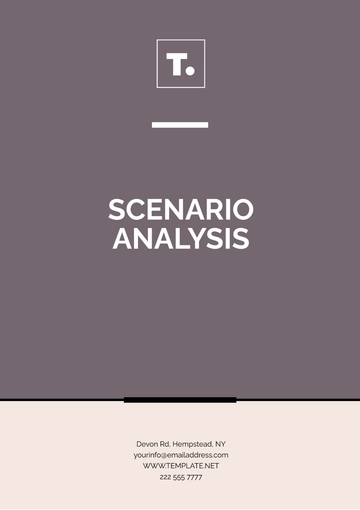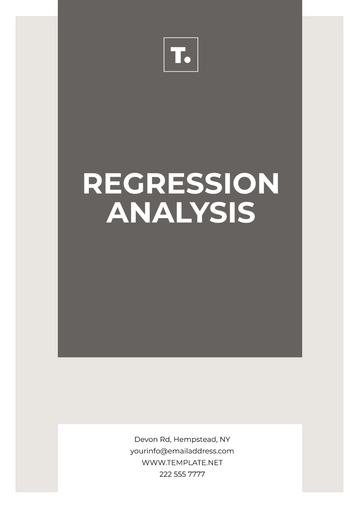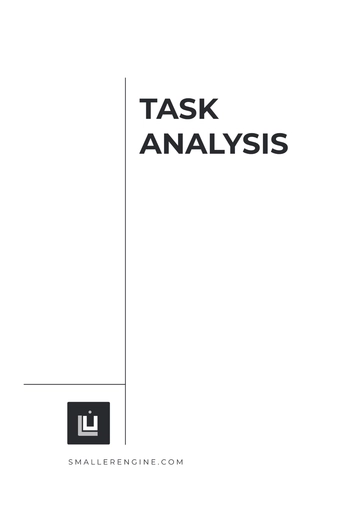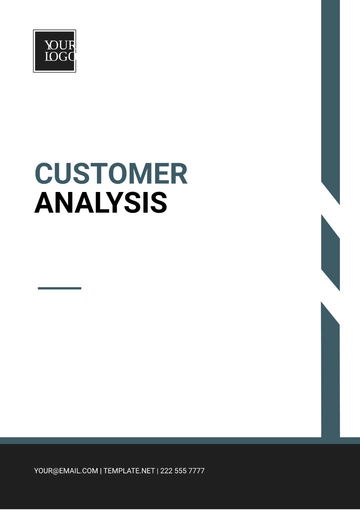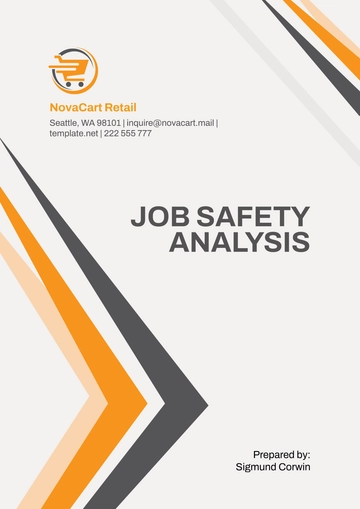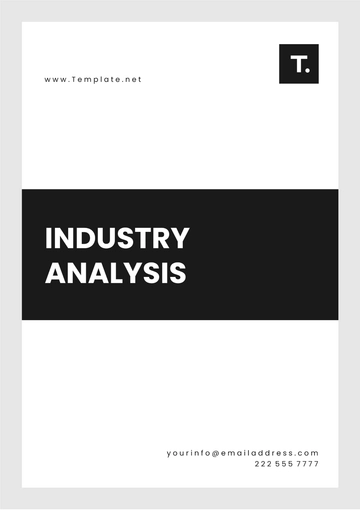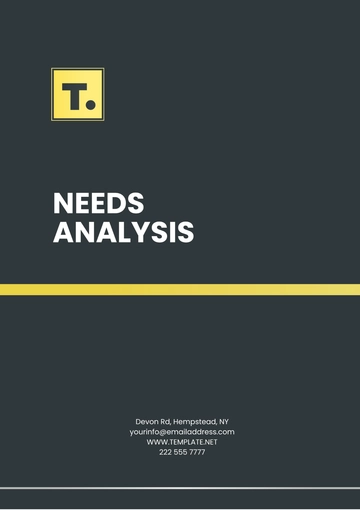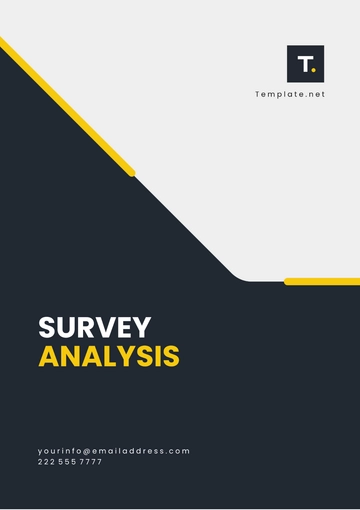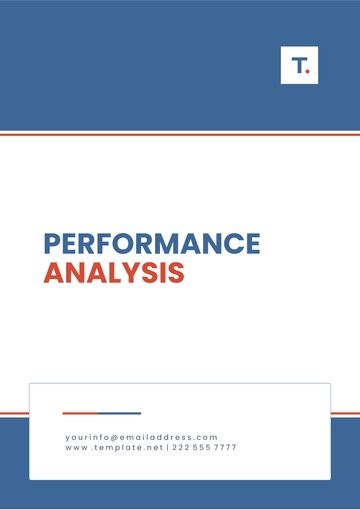Free Health & Safety Communication Financial Analysis
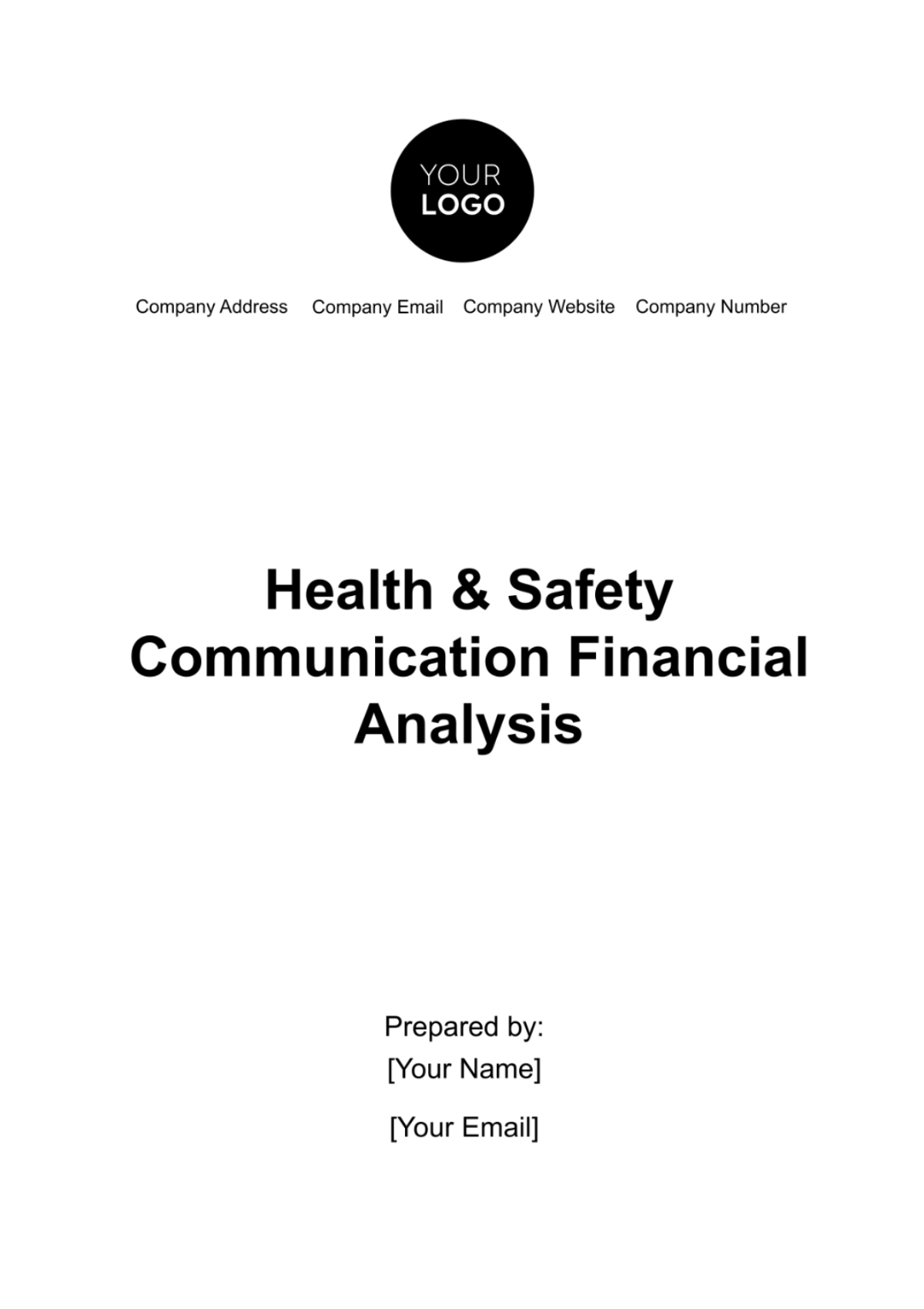
Introduction
The purpose of this financial analysis is to comprehensively evaluate the impact and effectiveness of our company's Health & Safety Communication & Awareness Campaigns. In today's fast-paced work environment, prioritizing health and safety is not only a regulatory necessity but also a strategic imperative. This analysis aims to delve into various financial aspects of the campaign, including budget allocation, direct and indirect costs, return on investment, employee feedback, compliance implications, and long-term financial impacts. By examining these elements, we seek to provide a holistic view of the campaign's performance and its value proposition to the organization. Our goal is to ensure that the campaigns are not only meeting their intended safety objectives but also delivering tangible financial benefits, thus justifying the investments made and guiding future strategies.
Budget Allocation
Overview
The allocated budget for our Health & Safety Communication & Awareness Campaigns is a critical component of our strategic planning. This subsection provides a detailed breakdown of how funds were allocated across various channels to optimize impact and reach.
Detailed Allocation
The following table illustrates the distribution of the total budget of $50,000 across different channels:
Channel | Budget Allocation | Percentage of Total Budget |
Digital Media | $20,000 | 40% |
Training Sessions | $15,000 | 30% |
Print Materials | $10,000 | 20% |
Miscellaneous | $5,000 | 10% |
Digital Media
The largest portion of the budget was allocated to digital media, including social media advertising, email campaigns, and digital banners. This choice reflects the broad reach and cost-effectiveness of digital platforms.
Training Sessions
Interactive training sessions for employees, both in-person and virtual, were the second-largest expense. These sessions were essential for hands-on learning and reinforcement of safety practices.
Print Materials
Print materials, such as posters, brochures, and handbooks, were distributed throughout the workplace to constantly remind employees of safety protocols.
Miscellaneous
A contingency fund was set aside for unexpected expenses, ensuring the campaign's adaptability and resilience.
Campaign Reach and Engagement
Overview
Evaluating the reach and engagement of our Health & Safety Campaign is pivotal in understanding its effectiveness in raising awareness and changing behavior.
Engagement Analysis
Our campaign utilized various platforms, each with different metrics of success. The table below presents the reach and engagement rates:
Platform | Reach | Engagement Rate |
Social Media | 50,000 | 10% |
5,000 | 25% | |
In-Person | 1,000 | 60% |
Social Media
Social media platforms like LinkedIn, Facebook, and Instagram were used to disseminate safety messages. Although they had the highest reach, the engagement rate was relatively lower, indicating broad but less interactive reach.
Email campaigns targeted all employees with customized safety tips and updates. The higher engagement rate suggests that personalized content was more effective in capturing attention.
In-Person
The in-person sessions, though limited in reach, had the highest engagement rate. These sessions allowed for direct interaction, immediate feedback, and hands-on learning, which significantly increased their impact.
Qualitative Engagement
In addition to quantitative metrics, qualitative feedback from employees indicated a high appreciation for the campaign's diversity in content and delivery methods. Many employees found the mix of digital, print, and in-person materials to be comprehensive and engaging.
Direct Cost Analysis
Overview
Direct costs are those specifically associated with the execution of the Health & Safety Communication & Awareness Campaigns. This includes expenses directly tied to the development, implementation, and promotion of the campaign.
Cost Breakdown
The table below outlines the primary direct costs associated with the campaign:
Item | Cost | Percentage of Total Direct Cost |
Personnel | $30,000 | 50% |
Marketing Materials | $20,000 | 33.3% |
Training & Development | $10,000 | 16.7% |
Total | $60,000 | 100% |
Personnel
Personnel costs include salaries and wages of the team members directly involved in the campaign, such as safety trainers, marketing staff, and content creators.
Marketing Materials
Expenses in marketing materials encompass digital and print media creation, including video production, graphic design, and printing costs for physical materials.
Training & Development
Costs associated with training and development include the fees for external safety experts, the development of training modules, and the purchase of necessary training equipment and materials.
Indirect Cost Savings
Overview
Indirect cost savings are benefits resulting from the campaign that are not directly tied to its execution but are consequential to its success. These savings manifest in various operational aspects of the company.
Savings Estimation
The following table provides an estimation of the indirect cost savings achieved through the campaign:
Factor | Estimated Savings | Percentage of Total Indirect Savings |
Reduced Accident Rates | $50,000 | 50% |
Improved Productivity | $30,000 | 30% |
Decreased Insurance Cost | $20,000 | 20% |
Total | $100,000 | 100% |
Reduced Accident Rates
A significant reduction in workplace accidents leads to lower medical costs, less downtime, and fewer compensation claims. This is a direct reflection of effective safety communication and training.
Improved Productivity
Enhanced safety awareness results in fewer disruptions from accidents and a more focused workforce, thereby improving overall productivity.
Decreased Insurance Costs
Improvements in safety records and reduced accident rates can lead to lower insurance premiums, as the risk profile of the company improves.
ROI Calculation
Overview
The Return on Investment (ROI) is a critical measure to assess the financial effectiveness of the Health & Safety Communication & Awareness Campaigns. It calculates the return relative to the campaign's cost.
ROI Metrics
To calculate the ROI, we consider the total investment against the total direct and indirect financial benefits.
Calculation Table
The following table provides the details for ROI calculation:
Description | Amount |
Total Investment | $60,000 |
Total Direct Savings | $0 |
Total Indirect Savings | $100,000 |
Net Benefit | $40,000 |
ROI (%) | 66.7% |
Calculation Method
The ROI is calculated using the formula:
ROI (%)=(Net BenefitTotal Investment)×100
ROI (%)=(Total Investment/Net Benefit)×100
Using the above figures:
\text{ROI} = \left( \frac{$40,000}{$60,000} \right) \times 100 = 66.7\%
This positive ROI indicates that for every dollar spent on the campaign, the company gains a return of 66.7 cents, making the campaign a financially viable initiative.
Employee Feedback and Morale
Overview
Employee feedback and morale are essential indicators of the campaign's impact on the workforce. These metrics provide insights into employee engagement, safety awareness, and overall satisfaction with the campaign.
Survey Results
A survey was conducted to gather employee feedback. The results are summarized in the table below:
Feedback Aspect | Positive Responses | Neutral Responses | Negative Responses |
Awareness Increase | 75% | 15% | 10% |
Safety Practices | 80% | 10% | 10% |
Overall Satisfaction | 70% | 20% | 10% |
Awareness Increase
A significant majority of employees (75%) reported an increase in their awareness of health and safety issues, demonstrating the campaign's effectiveness in disseminating crucial information.
Safety Practices
80% of the workforce acknowledged an improvement in their safety practices, indicating that the campaign successfully influenced behavior changes.
Overall Satisfaction
70% of employees expressed overall satisfaction with the campaign, reflecting positively on its design and implementation.
Qualitative Feedback
In addition to quantitative data, qualitative feedback highlighted appreciation for the campaign's creativity and diversity in communication methods. Many employees noted that the campaign made safety topics more engaging and relatable.
Compliance and Regulatory Impact
Overview
Assessing the impact of the Health & Safety Communication & Awareness Campaigns on compliance with health and safety regulations is crucial. This section focuses on the improvements in regulatory compliance and adherence to industry standards as a result of the campaign.
Compliance Metrics
The compliance metrics pre- and post-campaign are outlined in the table below:
Regulatory Aspect | Compliance Rate Before | Compliance Rate After | Improvement |
OSHA Standards | 75% | 95% | 20% |
Internal Policies | 80% | 95% | 15% |
OSHA Standards
The campaign significantly improved adherence to Occupational Safety and Health Administration (OSHA) standards. The compliance rate increased by 20%, indicating a substantial improvement in meeting external regulatory requirements.
Internal Policies
Compliance with internal health and safety policies also saw a notable increase. The comprehensive nature of the campaign ensured better understanding and implementation of these policies by the workforce.
Regulatory Benefits
Improved compliance not only reduces the risk of legal issues and penalties but also enhances the company's reputation. It demonstrates a commitment to employee welfare and regulatory standards, which can have positive implications for business opportunities and partnerships.
Long-term Financial Implications
Overview
The long-term financial implications of the Health & Safety Communication & Awareness Campaigns are assessed to understand their impact over an extended period. This includes projected savings and costs in the coming years.
Future Projections
The table below provides a projection of the financial implications for the next three years:
Year | Projected Savings | Projected Costs | Net Financial Impact |
2050 | $120,000 | $80,000 | $40,000 |
2051 | $140,000 | $85,000 | $55,000 |
2052 | $160,000 | $90,000 | $70,000 |
Projected Savings
The savings are expected to increase annually due to the cumulative effect of improved safety practices, reduced accident rates, and sustained compliance.
Projected Costs
The costs include ongoing expenses for campaign updates, training refreshers, and continued engagement efforts. While there's an expected slight increase in costs, it is outweighed by the savings.
Net Financial Impact
The net financial impact is projected to be increasingly positive, indicating that the long-term benefits of the campaign substantially outweigh the costs.
Strategic Implications
These projections suggest that continued investment in health and safety communications is not only beneficial for employee welfare but also a financially sound strategy. The data supports the case for ongoing commitment to these campaigns.
Conclusion
In conclusion, this financial analysis of the Health & Safety Communication & Awareness Campaigns reveals a multifaceted impact on the company. The positive return on investment, significant indirect cost savings, and improved compliance rates are clear indicators of the campaign's success. Employee feedback has been overwhelmingly positive, highlighting increased safety awareness and satisfaction with the campaign's content and delivery. The long-term financial projections are promising, suggesting that continued investment in these campaigns is not just beneficial for employee well-being but also a financially prudent decision. The analysis underscores the importance of effective health and safety communication in the workplace and its role in fostering a safe, productive, and compliant working environment. As the company moves forward, it should continue to prioritize and refine its health and safety initiatives, leveraging the insights gained from this analysis to enhance both employee welfare and financial outcomes.
- 100% Customizable, free editor
- Access 1 Million+ Templates, photo’s & graphics
- Download or share as a template
- Click and replace photos, graphics, text, backgrounds
- Resize, crop, AI write & more
- Access advanced editor
Introducing Template.net's Health & Safety Communication Financial Analysis Template. This editable and customizable tool allows for detailed assessment of financial aspects related to safety communication strategies. Utilize our Ai Editor Tool to tailor the analysis to your organization's needs. Ensure effective allocation of resources with Template.net's innovative solution.


